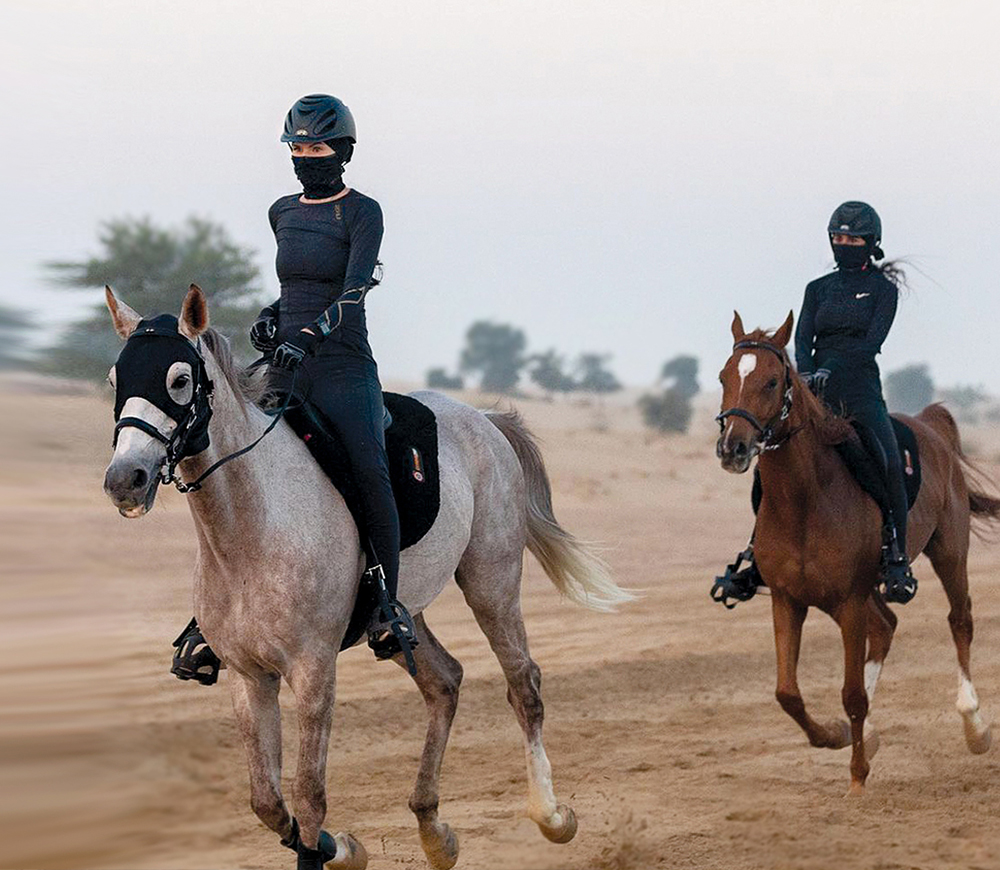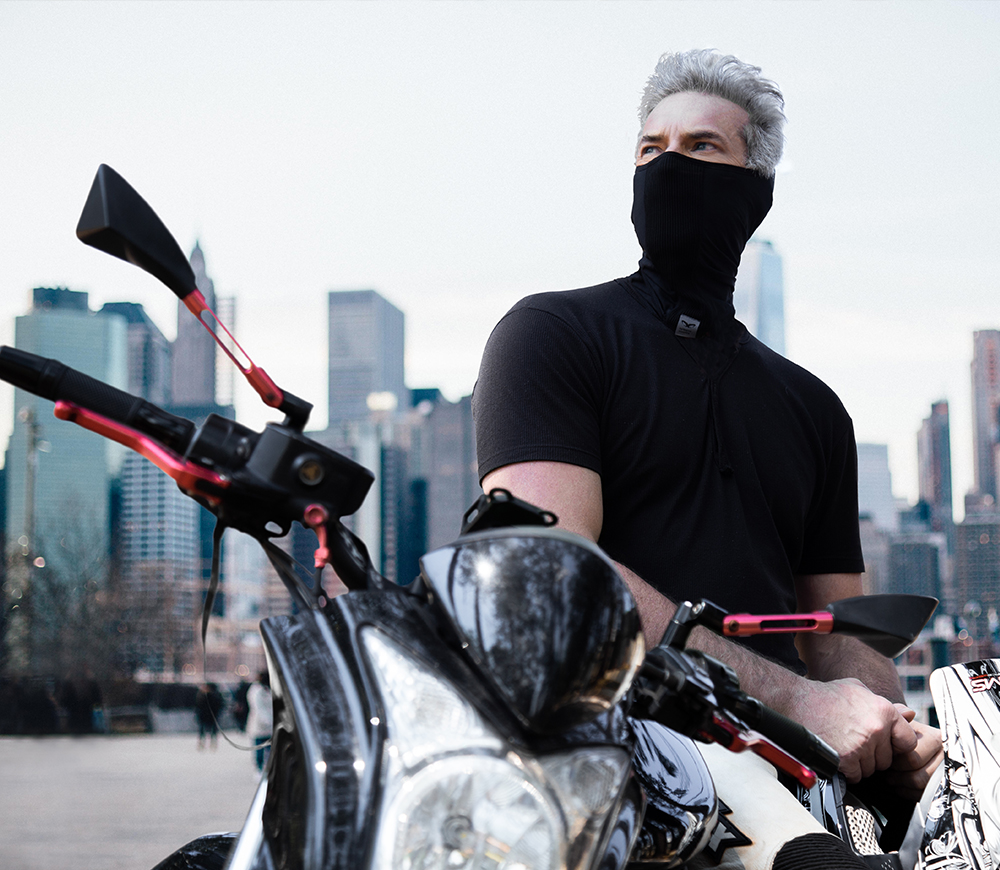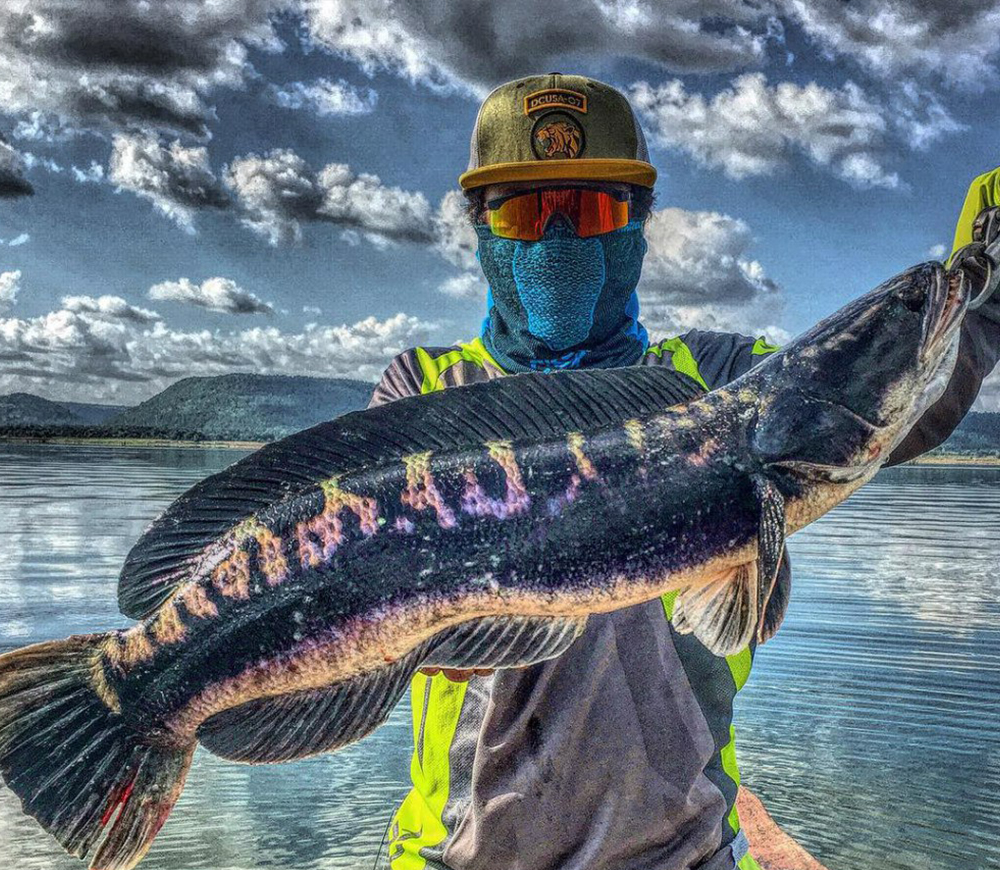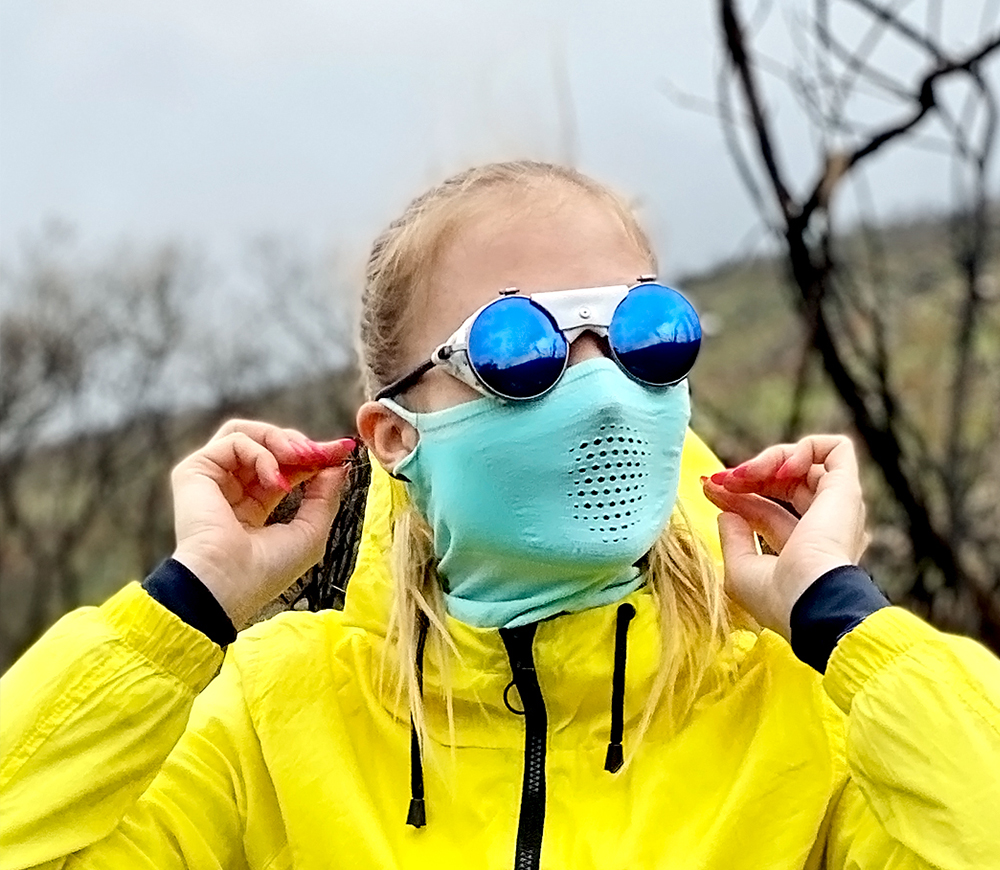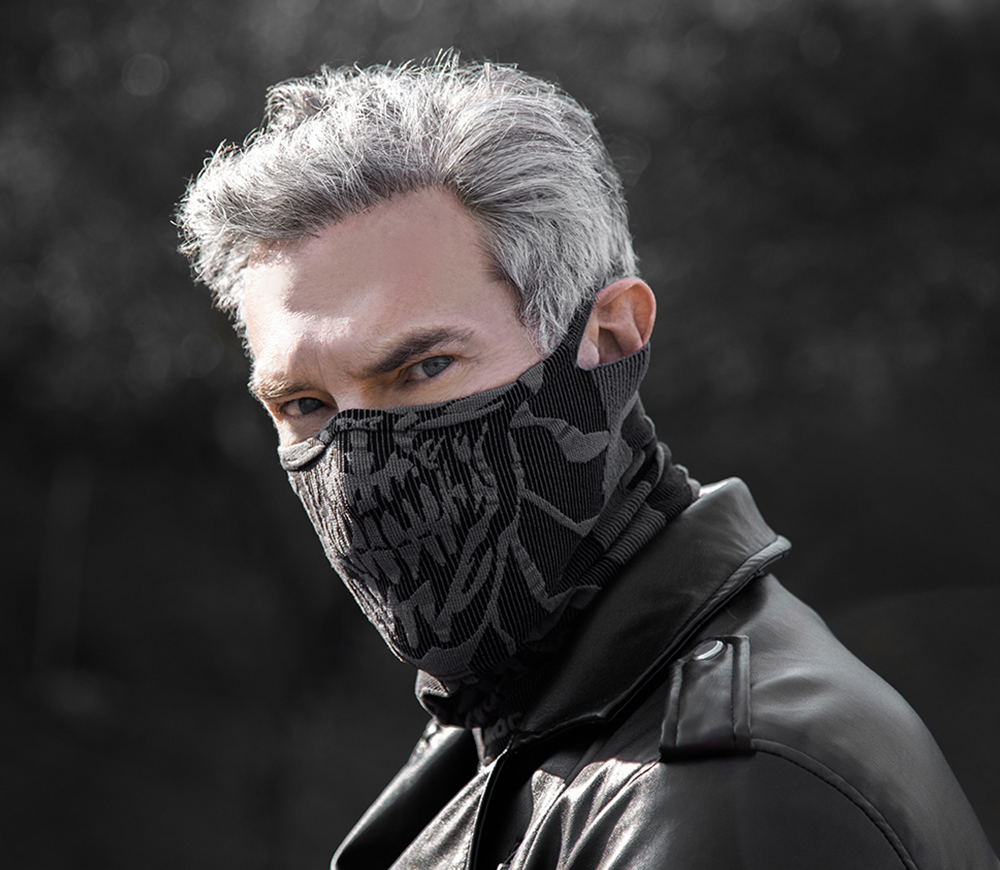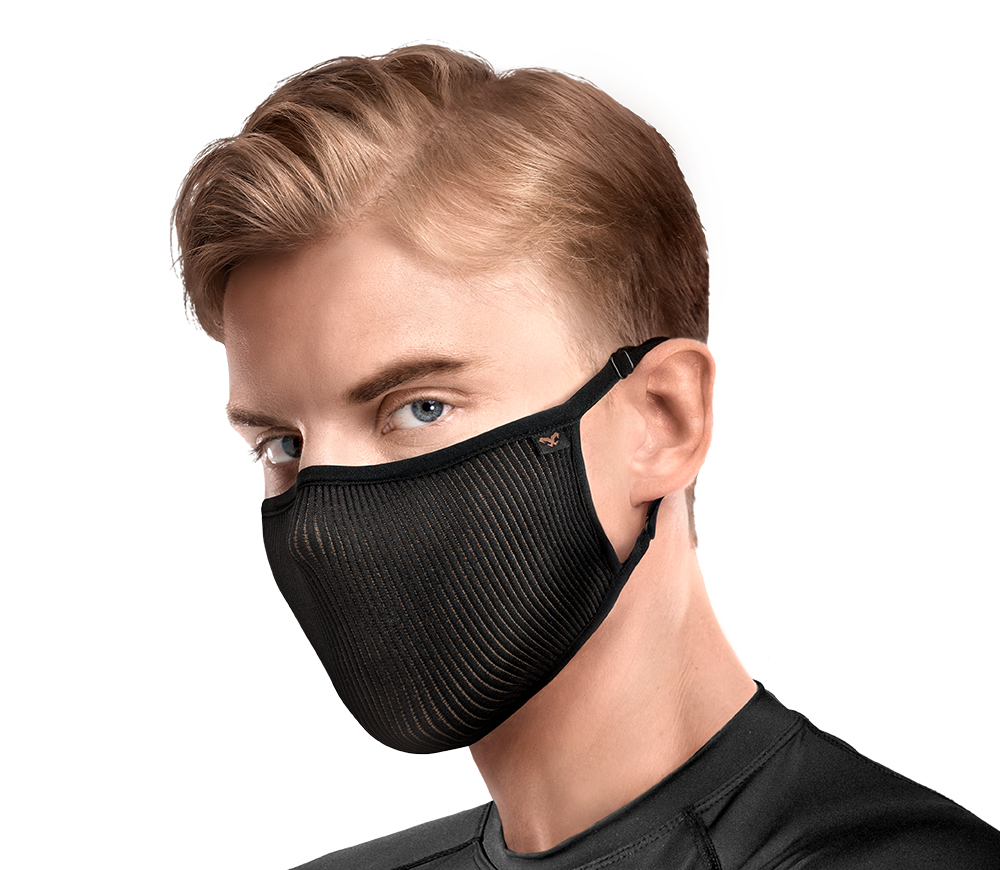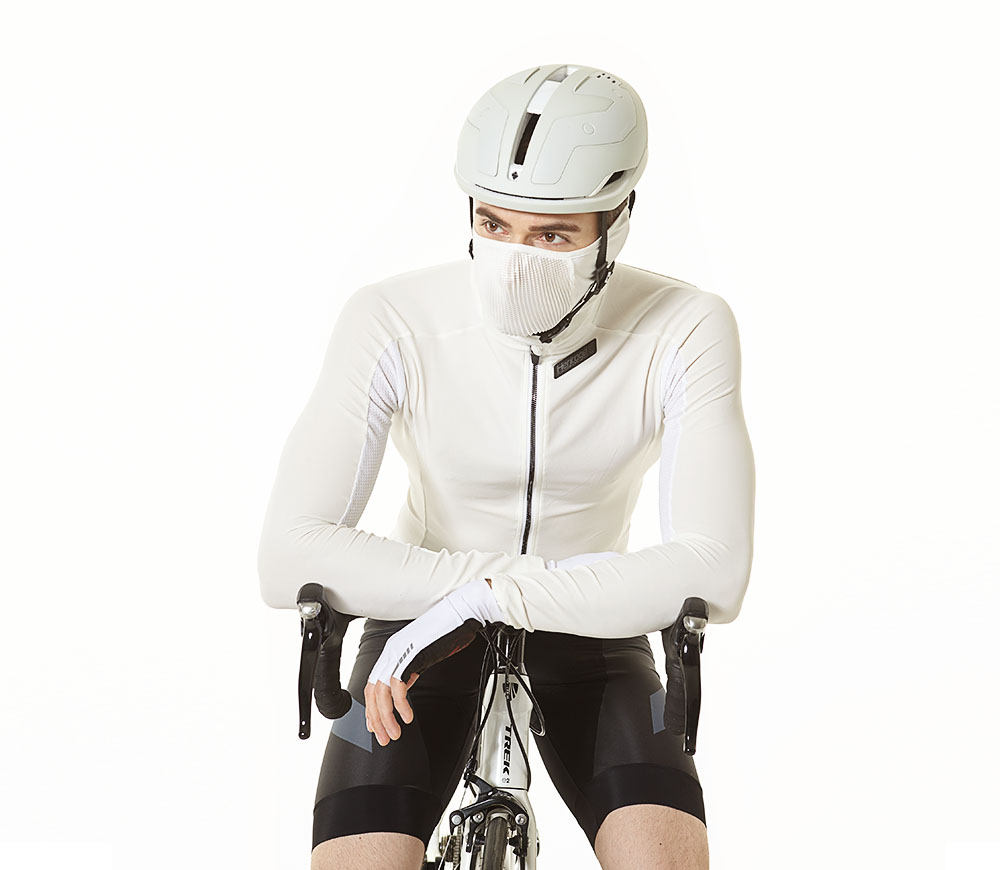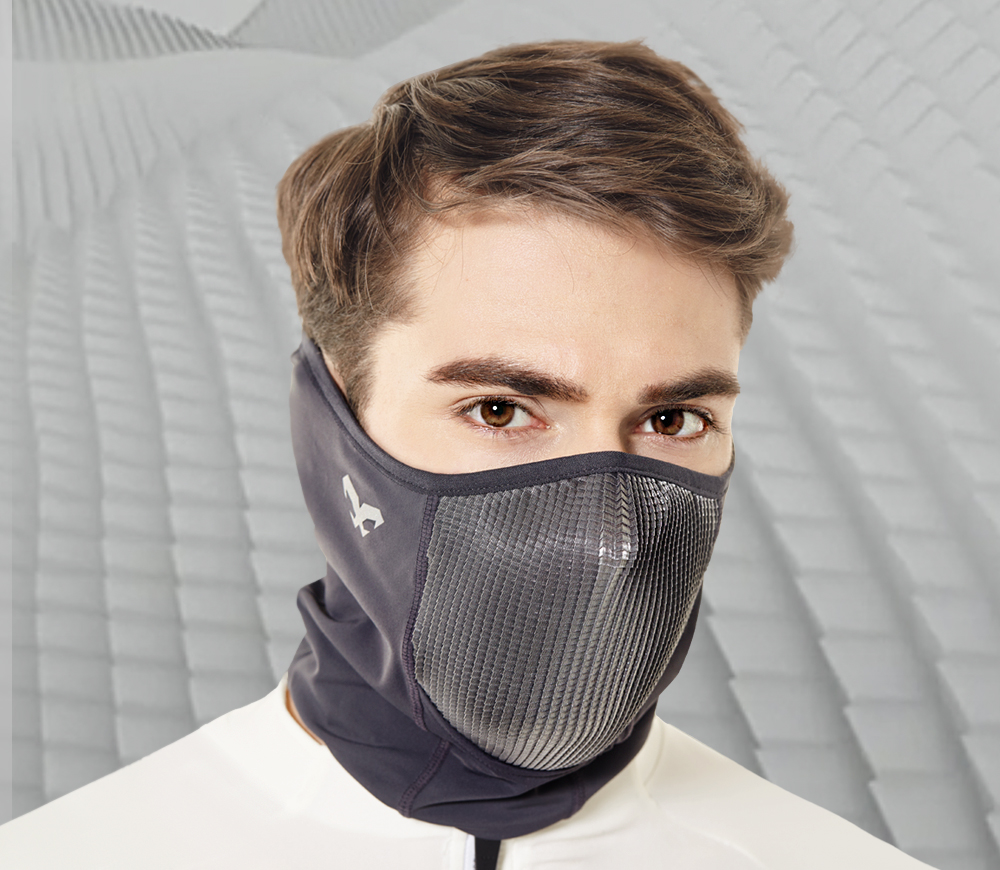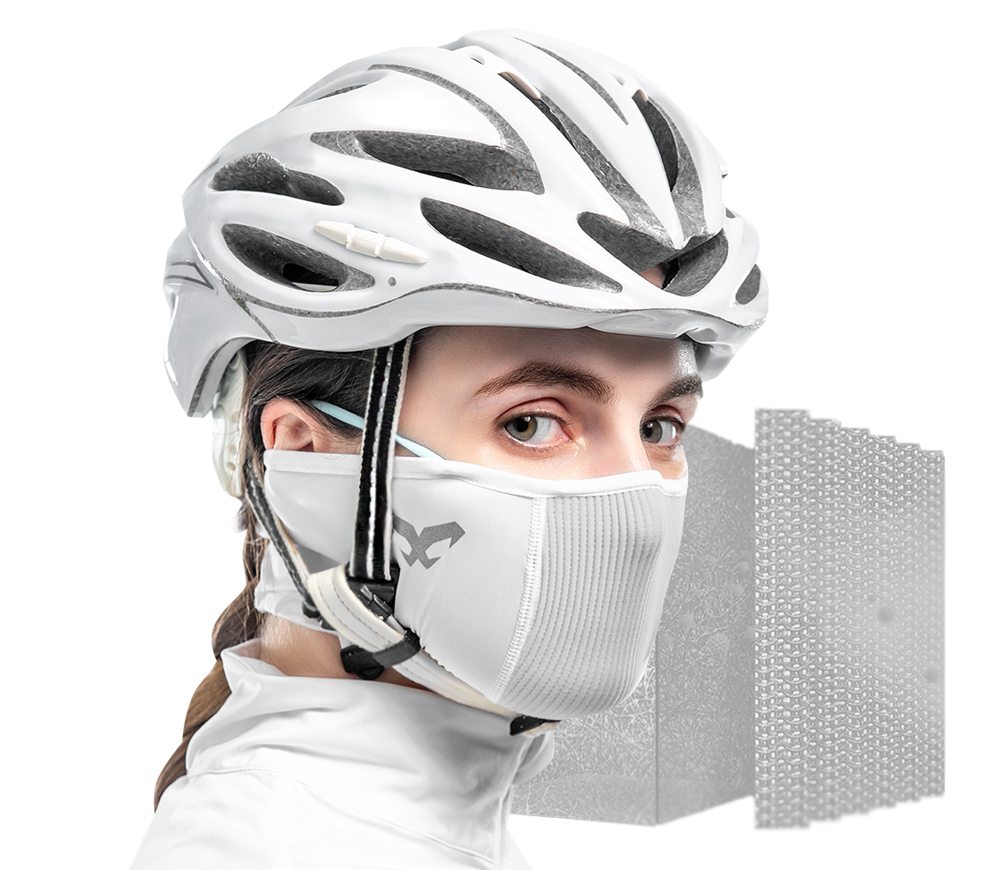Learn why do horse racers and endurance riders need to wear horse riding masks / face coverings for human? Where to get?
A year in the life of a motorcyclist is full of adventure. You can see us cruising through the summer sun and battling the winter wind. We’re fearless. But, we also have needs. But where to find a solution to those needs? Check NAROO
With fishing masks you can prevent cancer, it allows you to see fish better, you can fish in windy days and places, you will look cooler, and be able to spend longer fishing time
The Best Lightweight, Moisture-Wicking Cooling Neck Gaiter and Face Coverings Dedicated athletes don’t let a little something like hot weather get in the way of consistent and prolonged training. Even when the sun bears down mercilessly from peak summer skies, they strap on their gear, grab their water bottles and step out to stick to their athletic routines. However, without sufficient precautions, this dedication can lead to serious heat-related illnesses that can have long-term, sometimes even permanent effects. View this post on Instagram A post shared by NAROO MASK | Official (@naroomask_global) Why is it bad to exercise in the heat? According to the Mayo Clinic exercising in the heat causes excessive stress to the body. In addition to the physical strain of the exercise itself, the higher temperature exhausts the body faster, causes loss of moisture through sweating and increases core body temperature, all of which can contribute to multiple health issues. How does the heat harm our body? As the core temperature rises, more blood circulates through the skin to cool down. However, this takes blood away from the core and the muscles, which forces the heart to beat faster to be able to pump more blood. Additionally, if sweat does not evaporate fast enough in humid conditions, that adds to the stress and hikes up the body temperature even further. All of this makes physical activity more strenuous, even if the same activity was perfectly tolerable in cooler temperatures. In particularly high heat conditions, the process described above can result in the following conditions: Heat Cramps: Painful muscle cramps that can occur when exercising in the heat even when body temperature remains normal. Apart from the pain, the afflicted muscles may become firm and experience spasms. Heat Syncope: Alternatively called exercise-associated collapse, this refers to the fainting or lightheadedness caused during high heat conditions. It often occurs after an individual has been standing for a while, or has stood up quickly after sitting for a while. It can also emerge if someone suddenly stops after a spate of intense movement – like running or other high-octane cardio. Heat Exhaustion: In this case, body temperature rises, often to dangerous levels. The patient experiences nausea, weaknesses, fainting, excessive sweating, headache, vomiting, and cold skin. Without immediate attention, it can lead to heatstroke. Heatstroke: When the body is unable to cool itself and core temperature hikes up above 104F (40 C), the body reaches a life-threatening state termed as heatstroke. At this point, you will experience irritability, headaches, heart rhythm anomalies, nausea, fainting, dizziness, vomiting, impaired vision and severe fatigue. In the absence of immediate medical attention, this will lead to brain damage, organ failure, and in some cases death. How to Safely Exercise in the Heat Exercise strategically: Oliver Gibson, a senior lecturer in exercise science at Brunel University London, states that it is best to move exercise indoors or to the morning. Essentially, workout in temperatures that are tolerable and won’t force the body to malfunction. This is especially true for city folk as, to quote Dr. Gibson, “In an urban area, it is likely that the concrete will have retained a high amount of residual heat that will radiate back.” Focus on Acclimatization: William O. Roberts, MD, FACSM, a family medicine and sports medicine doctor at the University of Minnesota’s Phalen Village Clinic, says “When the weather warms, you need to be acclimated to the temperature change,”. Essentially, expose your body to increased heat in smaller doses to let it get used to the high temperatures. Let’s say you have a marathon coming up in the middle of the day in a month. Start by stepping out for a 10 minute jog every day for a week, then increase time to 20 minutes, then 30 and so on. Basically, get your body acquainted with weather conditions it will have to function in. Hydrate religiously: According to Suzanne Girard Eberle, author and sports dietitian, “You lose 2 1/2 cups of water per pound of body weight lost”. She recommends drinking 20 ounces of water two hours before exercise, 8 ounces of water a little while before going outside on a hot day and sipping water every 15 to 20 minutes during exercise. Wear light, breathable clothing: Once again, according to Eberle, athletes might make the mistake of overdressing when exercising in the heat. The body generates a lot of heat, especially the leg muscles. To prevent trapping this heat and sweat, sportspeople need to use athletic wear made from lightweight fabrics that wick away sweat quickly. Additionally, they need to be seriously mindful about applying sunscreen at regular intervals. Cooling neck gaiter or cooling clothing are a great option. AQUA-X: Ultra Thin Facial Protection Cooling Neck Gaiter For The Hottest Days To keep athletes safe from the adverse effects of heat exposure, NAROO uses AQUA-X, a multifunctional nylon yarn fabric that manages moisture absorption to prevent heat exhaustion. Embedded into NAROO’s lightweight breathable face coverings, AQUA-X manages moisture via a process called evaporative cooling. Essentially, evaporative cooling relies on thermal exclusivity to handle sweat. The fabric quickly absorbs heat and sweat from the skin. Additionally, since it is a moisture-wicking fabric, the sweat quickly evaporates, leaving the material dry and it’s wearer unhindered by excess heat or uncomfortable sweat. View this post on Instagram A post shared by NAROO MASK | Official (@naroomask_global) Benefits of AQUA-X Cold-sensitive and blocks harmful UV rays. Manufactured from thin, light synthetic material that quickly absorbs sweat and dries by allows it to evaporate. Since it wicks moisture and stays dry, chafing will not occur due to a wet seam rubbing against your skin. Stronger and lighter than cotton apparel, especially when soaked. By allowing heat and moisture to escape into the air, it helps regulate body temperature and keeps it at stable levels. NAROO’s N1 neck gaiter and N1s sports face covering are equipped with AQUA-X to allow flawless protection of sensitive facial tissue without hindering performance. Both these masks are designed with ultrathin fabric, and are perforated for maximum breathability. They also protect the skin from harsh UV rays
High-Performance Neck Gaiters and Face Coverings for All Year Round No matter what the sport, athletes pour their soul into perfecting it. This usually translates to consistent and physically arduous training, often over long hours in less than favorable conditions.Dedicated athletes, whether amateur or professional, don’t let weather or the environment stand in the way of gaining excellence. Whether it be the sweltering sun and scattered dust of summer or the painfully cold air of winter, sportspeople don’t back down from their training. However, athletes must take care to protect themselves from the elements – sun, rain or the cold. Without the right protective gear, they would be risking serious health concerns – lung damage, skin cancer, heat cramps, heat exhaustion, frostbite, and much more. The right equipment is mandatory for athletes to get through and thrive in challenging conditions – be it a sprint in 50°C (122°F) or soccer drills in -5°C (23°F). In particular, they must adequately protect their faces, necks and heads for optimal performance and minimal damage. Why do athletes need to protect their faces and necks? There are multiple natural and man-made elements that pose a threat to athletes’ health. A few of the most common ones:Extreme HeatThe US Centers for Disease Control and Prevention (CDC) has directed that athletes who exercise in extreme heat without the right protective gear can fall prey to dehydration and contract heat-related illnesses like heat exhaustion and heat stroke – sometimes facing fatal consequences.The sun’s UV-A (longer wave) and UV-B (shorter wave) rays can cause accelerated aging, irreversible skin damage and multiple skin cancers. UV-B rays cause tanning and skin burns, leading to damaged skin cells and a higher cancer risk. Extreme Cold“…extended exposure to cold can overwhelm its auto-regulation mechanism,” said Matthew Chinn, MD, emergency medicine physician with the Froedtert & MCW Moorland Reserve Emergency Department. “Shivering is one way the body maintains its temperature. As hypothermia progresses, the body’s shivering mechanism may stop working, people may become confused and the heart can stop working normally.”Human lungs find it tough to warm and humidify cold air, which can dehydrate and impair airways. Athletes experience coughing, burning sensation in the throat and windpipe and breathing issues when training in cold temperatures. Intense cold-weather exercise can force the lining of human airways to dehydrate, dry and suffer long-term, even irreversible damage.Dust inhalationDust or particulate matter can have seriously adverse health effects when inhaled without adequate protection:1. Premature death in people with heart or lung disease2. Irregular heartbeat3. Magnified asthma symptoms4. Reduced lung function. Larger particles, if inhaled can also lead to scarring of lung or airway tissue5. Aggravated respiratory symptoms – irritation of the airways, coughing, wheezing, irregular breathing Unfortunately, air pollution has become commonplace for modern humans, especially those living in metropolitan areas. Avoiding dust, fumes, insects, etc. is of utmost importance, and while individuals can avoid the worst of it by training early mornings or late evenings (lower traffic rates and factory fumes), they still need protection from inhaling particles suspended in air. Dust-free air is no longer a reality for most outdoor athletes. Athletes and people staying outdoors often use bandanas, kerchiefs, scarves and other items to cover up so as to protect themselves. But articles of clothing often prove ineffective in the face of heat, sunlight, humidity and dust alike. Intense physical activity becomes exceptionally difficult when someone is smothered by clothing on the face and mouth. Additionally, cloth covers become moist due to exhaled breath and sweat, adding further to the inconvenience. Needless to say, serious athletes cannot depend on makeshift items to cover their faces up in the midst of serious and stringent practice routines. They need lightweight breathable face masks that provide guaranteed protection and are designed to endure and adapt to the demands of arduous movement in rough weather. How can athletes protect themselves without ruining their performance? Since athletes are always on the move, it is imperative that they have accessories that adapt and modify with their physical activity. A sports facemask or a neck gaiter can’t slide off because the runner wearing it broke into a sprint. Whatever the physical intensity or the weather condition, sports face coverings must perform as flawlessly as the athlete wearing it. Driven by the aim to provide athletes with the best-in-industry protective gear, NAROO has developed the X-Series with X-FIBER fabric to ensure that their masks, neck gaiters, and balaclavas will move as they do. In other words, the mask and fabric adapt to the shape of the wearer’s face and neck as it changes under the pressures of movement and physical exertion. Made with honeycomb knitting that builds on and augments the features of a neck gaiter and mask, X-FIBER is elastic and shaped to perform flawlessly under consistent movement, pressure and duress. In simple words, it goes as you go, moves as you do. Features and Benefits of X-FIBER:Elastic with honeycomb knitting that improves all typical characteristics of commonly used face masks such as cycling masks, neck gaiters, balaclavas, ski masks, etc.X-FIBER maintains elasticity under all circumstances. It stretches and morphs to adjust to each individual face.It is breathable, equipped with UV protection and windshield capacities, making it perfect for all kinds of weather. It also prevents insects and dust from being inhaled into noses and mouths.The X-FIBER in our winter masks – X9 and X5H, serves to keep athletes warm while eliminating moisture for optimal body temperature and performance. It also warms the air before it is inhaled, preventing coughing, wheezing or lung damage due to the cold.It dries quickly in wet or humid conditions.It serves as an ideal replacement to neck gaiters. Through sustained research and real-world upgrades, NAROO masks offer high levels of protection for individuals with active lifestyles, be it in the sun, rain, snow or wind. They are an important tool in the active individual’s toolkit, essential for protection against environmental factors that can damage bodies and restrict performance. NAROO’s breathable sports masks have been inspected and certified by a number of prestigious verification bodies. The
NAROO: A Melhor Máscara Facial Respirável Antibacteria com Fio de Cobre Matando germes, odores e muito mais, sem prejudicar a sua pele Não existe método perfeito para manter a forma e, ao mesmo tempo, ficar livre dos patógenos. Se você está procurando uma máscara esportiva sem o desconforto e possíveis assombrações, no entanto, sua melhor solução está na máscara F.U Plus Copper da NAROO. O cobre tem uma longa história na medicina e na fabricação de tecidos, com uma infinidade de benefícios e vantagens sobre a prata como material de têxtil. Origens do Tecido de Cobre Originalmente usado como uma forma de esterilização e como proteção por meio de joias, o cobre como uma ferramenta medicinal e vestível tem sua origem encontrada desde o Egito Antigo, Grécia Antiga e, posteriormente, China. Quanto ao tecido com infusão de cobre, há indícios de que pode ter origem no Oriente Médio. Recentemente, a pandemia do Covid-19 despertou um interesse em fios com infusão de cobre por suas propriedades antimicrobianas. De roupas de compressão de cobre a máscaras de cobre, vemos um número crescente de produtos voltando-se para esse material devido aos seus benefícios à saúde. Benefícios do Tecido de Cobre e F.U Plus Copper Antimicrobiano O fio de cobre é altamente eficaz no combate a bactérias, fungos e vírus sem efeitos prejudiciais à saúde. A máscara antimicrobiana F.U Plus Copper da NAROO bloqueia 99,9% dos micróbios por meio do trabalho em equipe tricotado de seu tecido MICRONET™ e fios de cobre. Bactérias e vírus são cargas negativas no lado exterior, enquanto os íons de cobre positivos os separam destruindo seu DNA / RNA. • Respirável A combinação do tecido de filtragem MICRONET™ altamente respirável e as propriedades do próprio cobre tornam a mais recente máscara Copper da NAROO não apenas eficaz contra poluentes, mas também fácil de se exercitar e respirar com, ou melhor, através dela.• Regulação de calorO desempenho atlético pode diminuir significativamente com o tempo, e a fadiga muscular é um dos principais motivos. Quando nossa temperatura corporal aumenta, “a capacidade do músculo de se contrair de forma sustentável por um longo período de tempo sofre significativamente durante um esforço muscular mais longo e afeta negativamente o desempenho atlético“. O cobre é um excelente regulador térmico, auxiliando na resistência muscular e na oxigenação, auxiliando assim no desempenho do atleta.• Absorção de umidadeTodas as máscaras faciais da NAROO, incluindo a F.U Plus Copper, são altamente absorventes e auxiliam na regulação do suor. Embora a transpiração durante o exercício e eventos competitivos possa ser desconfortável, é também onde os micróbios prosperam, já que o odor corporal é parcialmente gerado devido às secreções das glândulas sudoríparas. Manter-se seco mantém você seguro e cheirando melhor.• Controle de OdorÉ aqui que o cobre desempenha um papel realmente importante nas roupas esportivas, incluindo as máscaras esportivas. As bactérias que crescem em nosso suor são responsáveis por muitos efeitos nocivos, incluindo os odores desagradáveis . Como dissemos anteriormente, o cobre é extremamente tóxico para essas bactérias, neutralizando o cheiro mesmo nas pequenas quantidades de suor que passam pelo tecido da máscara NAROO. • Saúde da peleAlém de suas propriedades biocidas, o cobre é um mineral que promove a geração e estabilização da pele, tornando-o “um material ativo muito atraente para a melhoria do bem-estar da pele”. Combinar isso com suas outras habilidades e tecidos respiráveis significa que você, em última análise, reduz os irritantes que ressecam e envelhecem sua pele. View this post on Instagram A post shared by NAROO MASK | Official (@naroomask_global) Benefícios do Tecido de Cobre e F.U Plus Copper Embora cobre, prata e ouro sejam todos antimicrobianos, existem algumas diferenças importantes que tornam o cobre o vencedor.• Um ponto importante é que o cobre pode prosperar em quaisquer circunstâncias ambientais, enquanto a prata requer umidade para que esses mecanismos sejam ativados.• A prata tem muito pouco a contribuir para a saúde geral do corpo humano, enquanto o cobre é um micronutriente essencial com todos os benefícios associados já explorados neste blog.• Não só a prata não é um metal necessário para a nossa pele, mas também faltam ao nosso corpo mecanismos específicos para lidar com seu contato, tornando-a efetivamente mais tóxica para os humanos. O tecido de cobre é seguro para sua saúde respiratória? A inalação de metais não é uma ideia atraente, mas é uma preocupação que você não precisa ter com o F.U Plus Copper da NAROO. Feitas de diferentes materiais de tecido, as peças que usam fios com infusão de cobre obtêm essa infusão por meio de um processo chamado ligação iônica. O processo incorpora o cobre ao tecido, garantindo que ele não se parta em partículas que podem ser inaladas. View this post on Instagram A post shared by NAROO MASK | Official (@naroomask_global) Escolhendo sua máscara de cobre com sabedoria Como qualquer outro produto usado pensando na saúde, os revestimentos faciais de cobre devem ser escolhidos com sabedoria. Máscaras em que o fio é simplesmente forrado com cobre, por exemplo, perderão essa camada com bastante rapidez, perdendo seus benefícios. A tecnologia de máscara F.U Plus Copper da NAROO de cobre ligado não é apenas segura para a sua saúde, mas torna nossas máscaras altamente reutilizáveis, pois podem ser lavadas até 100 vezes sem perder sua capacidade de proteção.O boom das máscaras à base de cobre significa que há uma variedade de qualidade para esses produtos e, portanto, em seus resultados. É importante estar atento às certificações, história e know-how de uma empresa para manter os atletas seguros. As máscaras da NAROO são testadas e certificadas quanto à segurança pelo Korea Apparel Testing and Research Institute (KATRI) e especificamente projetadas com os atletas em mente, tornando-as ajustáveis, respiráveis e duráveis.O fio de cobre está aqui para abrir uma nova era em vestimentas de proteção, e as análises e depoimentos dos que já testaram são entusiasmadas e promete um futuro brilhante. “Talvez você goste deles porque eles ficam sensacionais depois de experimentar um par pela primeira vez”. — Carlo G, Spectral Body“Considerando as propriedades fundamentais do cobre no combate ao
Guia de proteção solar para ciclistas e corredores. A dedicação de atletas sérios é algo diferente. Não há o que os impeça de treinar e treinar muito. Eles não deixam de treinar simplesmente porque está muito quente ou porque o sol está muito forte. Eles normalmente se mantem em movimento, não importa o custo.Treinar em altas temperaturas sob o sol escaldante é comum para atletas em muitas partes do mundo. No entanto, sem o equipamento de proteção adequado, eles correm o risco de desenvolver vários problemas de saúde devido ao calor e aos raios ultravioleta. Quais os riscos associados à exposição ao sol? A exposição ao sol pode causar mais do que uma queimadura de sol. Isso pode resultar em uma série de doenças e problemas relacionados à pele que são facilmente evitados. De acordo com pesquisas:• A radiação UV do sol carrega radiação UV-A (onda mais longa) e UV-B (onda mais curta) potencialmente prejudiciais. Se superexpostos a esses raios, os atletas podem sofrer envelhecimento acelerado, danos irreversíveis à pele e múltiplos tipos de câncer de pele.• Os raios UV-B, geralmente mais intensos na primavera e no verão, causam bronzeamento e queimaduras na pele, os quais podem causar danos às células da pele e aumentar o risco de câncer.De acordo com a Mayo Clinic, os exercícios em climas quentes estressam o corpo e podem causar:• Cãibras de calor: contrações musculares dolorosas que geralmente aparecem durante o exercício, acompanhadas de espasmos e firmeza muscular anormal.• Síncope de calor e colapso associado ao exercício: náuseas, tonturas e desmaios que ocorrem em altas temperaturas.• Exaustão por calor: quando a temperatura corporal se eleva de forma anormal, pode causar vômitos, náuseas, desmaios, fraqueza e muito mais.• Insolação: uma condição com risco de vida em que a temperatura corporal é superior a 40 graus Celsius. Como os atletas podem se proteger do sol? Simplificando, cubra-se. Os atletas precisam usar uma máscara ou cobertura facial que proteja seus rostos e pescoços da exposição extrema aos raios ultravioleta. Eles também precisam usar protetor solar de forma consistente, hidratar em intervalos regulares e estar atentos a como seus corpos estão respondendo ou reagindo ao ambiente. Como fazer isso durante o treinamento em clima quente?Comece cedoÉ melhor comecar treinar o mais cedo possível, pois isso ajuda a evitar as temperaturas mais fortes e prejudiciais durante o dia.Carrie McCusker, treinadora nível 2 do TrainingPeaks e atleta, aconselha os atletas a evitarem o sol nos horários de pico.Ela escreve em seu blog – “Nunca é muito cedo ou muito tarde para começar a proteger sua pele. Não se deixe levar pela complacência da juventude ou de climas menos ensolarados”.Portanto, na medida do possível, treine de manhã cedo ou depois do pôr do sol. Um treino matinal revigorante define o tom perfeito para um dia ativo. Por outro lado, os treinos noturnos são excelentes para relaxar após um dia sedentário. Para estar duplamente seguro, verifique o índice de UV antes de sair para o exercício. A proteção solar é necessária quando os níveis de UV são acima de 3. Use protetor solarPoucas coisas são tão dolorosas e irritantes quanto as queimaduras de sol. Elas atrapalham a programação de exercícios e podem deixá-lo inativo por dias. Para evitar isso, aplique protetor solar FPS 50+ de amplo espectro resistente à água na pele limpa e seca 15 minutos (ou mais) antes de sair. Leve o protetor solar com você e reaplique a cada duas horas. View this post on Instagram A post shared by NAROO MASK | Official (@naroomask_global) Reabastecer eletrólitosSe você estiver se aventurando em exercícios moderados por cerca de 60 minutos, certifique-se de beber água o tempo todo. Não saia de casa sem beber pelo menos 500ml de água. De acordo com Kate Lemere, uma treinadora de fitness e escritora da cidade de Chicago, afirma que deve-se “planejar passar 20% do seu dia de trabalho no banheiro”. Se você tem uma garrafa de água grande com você, você estará mais inclinado a bebê-la, então compre uma garrafa de água com mais de 1L para que você não tenha que reabastecer com tanta frequência e tenha como meta beber 3-4 delas ao longo do dia.”Caso o seu treino seja de alta intensidade e / ou dure mais de uma hora, mude para bebidas esportivas com eletrólitos (sódio, cloreto e potássio). O corpo humano precisa desses minerais para compensar os fluidos perdidos pelo suor e se manter sem entrar em colapso ou ser prejudicado.Use roupas de proteção“Como posso proteger meu rosto do sol naturalmente?” Escolha e use roupas de ginástica que tenham proteção UV e material projetado para facilitar os movimentos.Rebecca Louise, uma instrutora certificada pela NASM de fitness global, corretamente diz: “Conforme a temperatura muda, nossas roupas também precisam mudar. Neste caso, queremos que sejam leves e respiráveis. Quanto mais roupas você veste, mais energia você esgota! ”Concordamos – roupas mais leves são melhores para proteção solar. Considere usar roupas feitas de material que absorve suor, como – ajuste seco, nylon ou uma mistura de nylon e poliéster – material que mantém o corpo fresco.Use um chapéu e óculos de sol. Os raios do sol muitas vezes refletem em superfícies como estradas, calçadas, areia e neve e atingem o rosto, explodindo com radiação prejudicial de UV. O que você pode fazer em relação à exposição ao sol? Sejamos honestos. Os atletas profissionais não podem andar por aí com chapéus e óculos de sol inconvenientes que podem cair à qualquer momento (e se você correr muito rápido ou pular muito alto?) Eles precisam de algo projetado para lhes dar proteção garantida, não importa o quão quente fique .Agora o especialista. EX-SHADER: Projetado para praticantes de esportes que treinam no sol View this post on Instagram A post shared by NAROO MASK | Official (@naroomask_global) Com esforço para fornecer aos atletas o melhor equipamento de proteção, a NAROO criou o tecido EX-SHADER encontrado na polaina de pescoço N0 e na máscara N0U. Equipado com tecnologia de malha de proteção solar que fornece proteção UV de 92%, este tecido de fácil respiração oferece
Ultimate Guide to Sun Protection for Cyclists and Runners Outdoors people are a different breed. There isn’t much that deters us from going out, training, and working hard. We don’t shy away from training simply because the weather is too hot or because the sun is too bright. Dedication keeps us going, no matter the cost. Training at high temperatures under the blazing sun is common for athletes in many parts of the world. However, without the right protective gear, they stand the risk of developing multiple health issues due to the heat and UV rays. What risks are associated with sun exposure? Sun exposure can cause more than a sunburn. It can result in a number of skin-related diseases and issues that are very easily prevented. According to research the sun’s UV radiation carries potentially harmful UV-A (longer wave) and UV-B (shorter wave) radiation. If overexposed to these rays, athletes may suffer accelerated aging, irreversible skin damage and multiple skin cancers. UV-B rays, usually most intense in spring and summer, cause tanning and skin burns, both of which can cause damaged skin cells and a higher risk of cancer. According to the Mayo Clinic, exercising in hot weather stresses the body and can cause: Heat cramps: Painful muscle contractions that often show up during exercise, accompanied by spasms and unnatural muscle firmness. Heat syncope and exercise-associated collapse: Nausea, lightheadedness and fainting occurring in high temperatures. Heat exhaustion: When body temperature becomes unnaturally high, it can lead to vomiting, nausea, fainting, weakness, and more. Heatstroke: A life threatening condition in which body temperature is higher than 40 degrees celsius. How can outdoor lovers protect themselves from the sun? Simply put, cover up. Athletes need to wear a face mask or face cover that guards their faces and necks from extreme exposure to UV rays They also need to wear sunscreen consistently, hydrate at regular intervals, and be mindful of how their bodies are responding or reacting to the immediate environment. How to do that during hot weather training?Start Early. It is best to workout and train as early in the day as possible, as it helps avoid the strongest and most harmful temperatures during the day.Carrie McCusker, a level 2 TrainingPeaks coach and a lifelong athlete, advises athletes to avoid the sun during its peak hours.She writes in her blog – “It is never too early or too late to start protecting your skin. Don’t be lulled into complacency by youth or less-sunny climes.”Hence, as far as possible, train early in the morning or after the sun goes down. A brisk morning workout sets the perfect tone for an active day. On the other hand, evening workouts are excellent for unwinding after a sedentary day. To be on the safe side, check the UV index before stepping out for exercise. Sun protection is required when UV levels are 3 or higher. Liberally Apply SunscreenFew things are as painful and annoying as sunburns. They will disrupt workout schedules and can leave you inactive for days. To prevent this, generously apply a water resistant SPF 50+ sunscreen onto clean, dry skin at least 15 minutes (or more) before stepping out. Carry the sunscreen with you and strictly reapply every couple of hours if you aren’t back inside yet. View this post on Instagram A post shared by NAROO MASK | Official (@naroomask_global) Replenish ElectrolytesIf you’re venturing on moderate exercise for about 60 minutes, make sure to keep drinking water throughout. Don’t leave home without drinking at least 16 ounces of water. As per Kate Lemere, a fitness trainer and writer in the city of Chicago, one should “plan to spend 20% of your work day in the bathroom. If you have a large water bottle with you you’ll be more inclined to drink it, so buy a water bottle that is 40+ ounces so you don’t have to refill as often and make a goal to drink 3-4 of them throughout the day.” In case your workout is high-intensity and/or lasting more than an hour, switch to sports drinks with electrolytes (sodium, chloride and potassium). The human body needs these minerals to make up for fluids lost through sweating, and keep itself going without collapsing or being harmed. Gear Up with Protective Clothing“How can I protect my face from the sun naturally?” Pick out and wear workout clothes that have UV protection and material designed for easy movement. Rebecca Louise, a global fitness NASM Certified Trainer, correctly says, “As the temperature changes, our clothing needs to change too. In this case, we want them to be light and breathable. The more clothing that you put on, the more energy you drain!”We agree – lighter clothing is better for sun protection. Consider wearing clothes made up of sweat wicking material like – dry fit, nylon or polyester nylon blend – material that keeps the body cool. Wear a hat and sunglasses. The sun’s rays often reflect off surfaces like roads, sidewalks, sand and snow and hit the face, blasting it with harmful UV radiation. What Can You Do About Sun Exposure? Let’s be honest. Professional athletes can’t be running around with inconvenient hats and sunglasses that may fall off at the slightest provocation (what if you ran too fast or jumped too high?) They need something designed to give them guaranteed protection, no matter how hot it gets. Enter the expert. EX-SHADER: Designed for Outdoors People who Train in the Sun View this post on Instagram A post shared by NAROO MASK | Official (@naroomask_global) Specific benefits of the EX-SHADER:Structured in a way that provides ventilation and comfort in high heat.Built so that the wearer can breathe easily even when performing strenuous physical activity.Manufactured from proprietary NAROO Mesh Fabric that provides 92% sun protection.Dries quickly, even in hot, humid environments.Reduces chances of skin ailments and associated illnesses caused by heat and sun exposure.Easy to wash, clean, and maintain between uses.NAROO’s breathable sports masks have been inspected and certified by a number of prestigious verification bodies. Each line offers a unique
How to protect yourself from pollen allergens, pollution particles in 2024. Find out Micronet, it is breathable, stylish and fitlering.

